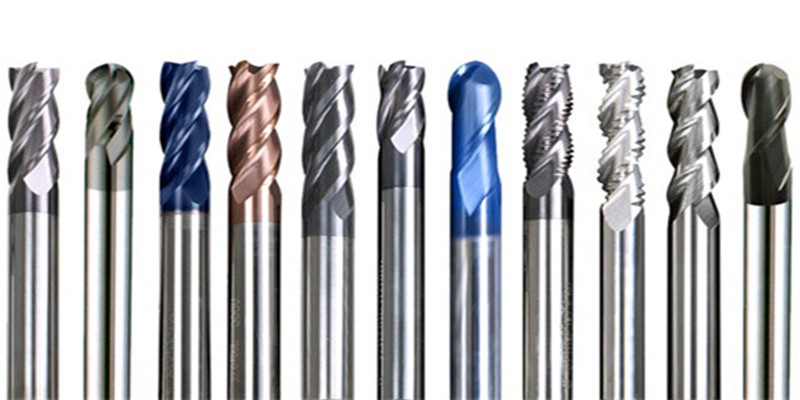- July 5, 2022
CNC machines can perform various machining procedures due to the different CNC machining tools available. These different CNC tools have various properties that make them suitable for various operations while reducing the need for manual input from machine operators. This eliminates the old problem of machine operators getting tired and ruining the process.
The CNC machining tools are divided into various types, including turning, cutting(milling), drilling, and grinding tools. Among them, the CNC cutting tools are the most used.
This article will describe the various types of CNC machine tools and the functions of each of them. If you’ll like to know more about these machining tools, then this is the quick guide for you.
CNC Turning Tools
Turning is one of the oldest machining procedures going as far back as the Egyptian empire. CNC turning tools work with a lathe (turning machine) that rotates the workpiece at high revolutions per minute while the turning tool shapes the workpiece into the programmed shape. The shape of the workpiece depends on the type of turning procedure and the turning tool used. Examples of various turning tools include:
Boring Tools
Boring tools work with the lathe to enlarge straight or tapered holes that have already been drilled or cast into the workpiece.
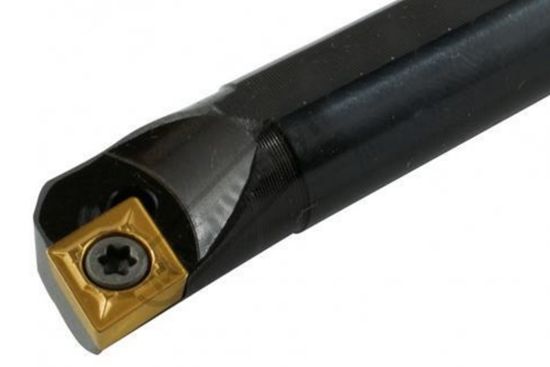
Chamfering Tools
Machinists use chamfering tools for various applications such as deburring, removing sharp edges on workpieces, and beveling.
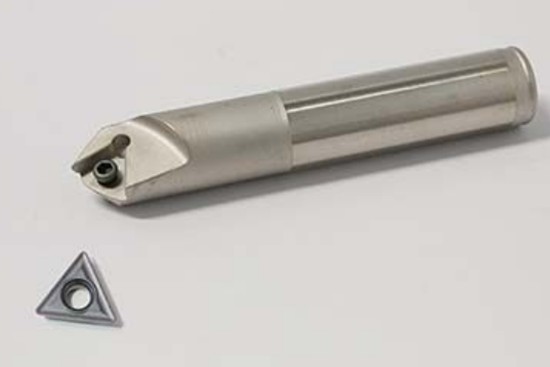
Knurling Tool
Knurling tools are CNC turning tools functional for producing various patterns (diagonal, straight, or diamond) on the surface of workpieces. These patterns serve as a source of a better grip on the finished part.
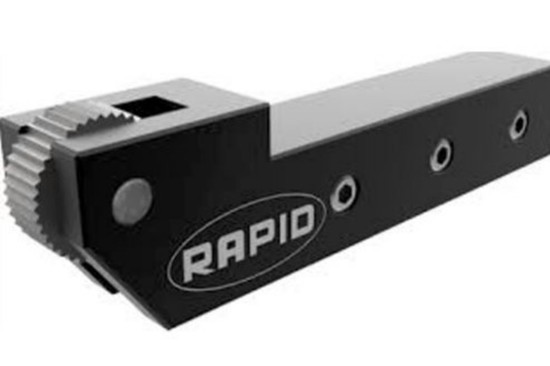
Parting Tool
Parting tools have a blade-like edge that works by cutting materials away from the workpiece. Machinists also use it to cut the finished part from the rest of the workpiece.
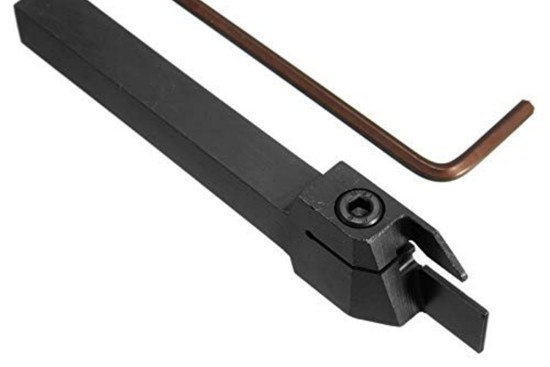
CNC Cutting Tools (CNC Milling Tools)
CNC cutting tools are one of the most utilized sets of tools in the CNC industry. Even though they are called cutting tools, there is no procedure named cutting in CNC. Instead, we have the milling procedure. This is why CNC cutting tools are also known as CNC milling cutters/CNC cutters.
Regarding the procedure, milling is another popular procedure for which machining tools are commonly used. Although very vital in the machining space, it achieves the accuracy that the turning procedure has due to the large variety of CNC tools used in milling. CNC milling cutters are used with a CNC mill (or milling machine). The milling machine uses CNC cutters to remove material from different spots on a fixed workpiece in a circular motion.
Examples of the cutting tools include:
End Mills
If you’re familiar with CNC milling, you’ll definitely have heard about end mills. They are quite similar to drill bits but are more versatile. They help to cut holes into materials even without a pre-drilled spot. There are also various types of end mills which differ by the number of flutes and the type of nose they have.
Classifying them by their nose, there are three types: bull nose, ball nose, and flat end mills. Regarding their flute number, the minimum any end mill could have is 8.
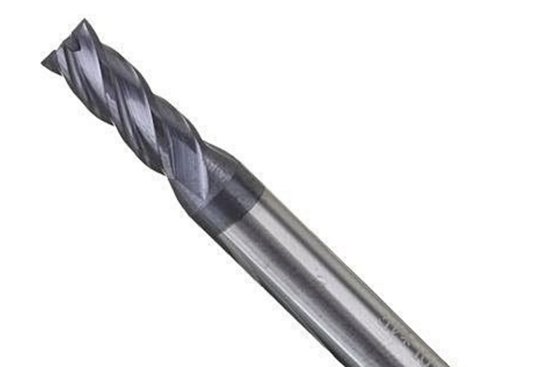
Slab Mills
Slab mills are CNC cutting tools used to mill flat surfaces. They are mostly suited for heavy-duty operations. To use slab mills, you must place the workpiece surface parallel to the CNC mill table.
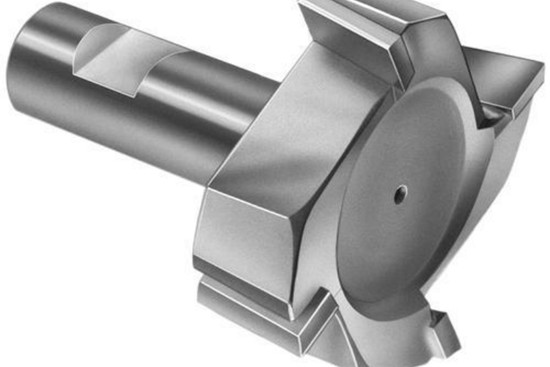
Face Mills
Face mills are CNC cutters with flat faces with replaceable cutting edges made with carbide. Since these cutting edges are on the side, face mills can only cut workpieces in the horizontal direction. The function of face mills is to make flat sections on workpieces. One advantage of using face mills is the ability to replace their cutting edges. This property gives the tool a longer operating time.
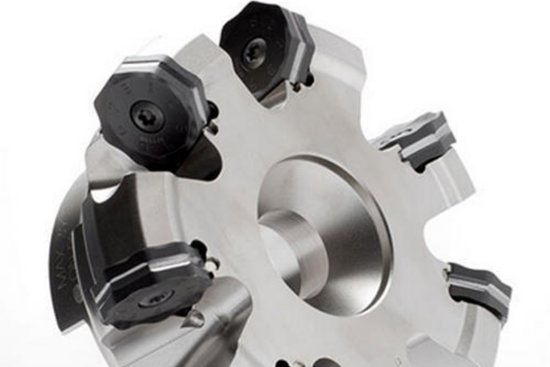
Fly Cutters
Fly cutters are CNC cutters that consist of a tool body and cutting bits. Their function is to make shallow or broad cuts on workpieces. They could either have one or two cutting bits. The advantage of using fly cutters with two cutting bits is that they can cover a larger section of the workpiece. You could use them for similar functions to face mills; however, they are less expensive.
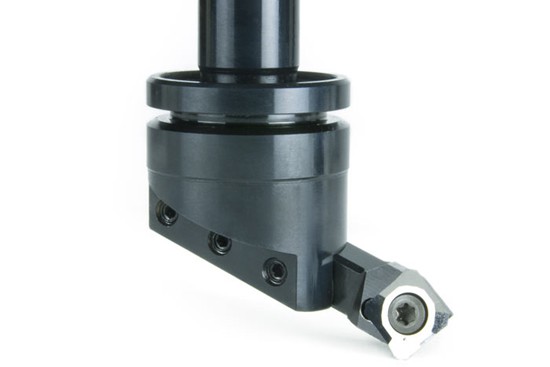
Hollow Mills
Hollow mills are CNC cutters with a pipe shape and look like inverted end mills. They are commonly used in creating form radii and full points on workpieces.
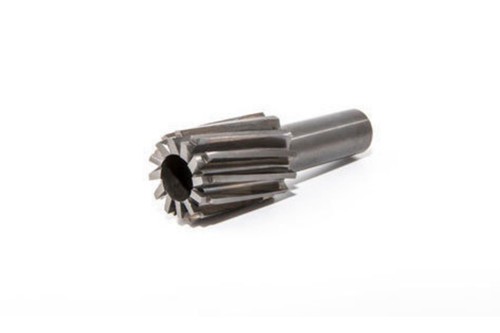
Apart from these types of cutting tools, there are still many types which include:
- Reamers
- Side-and-face cutters
- Thread mills
- Involute Gear Cutters
Drilling Tools
It is also known as drill bits, machinists use drilling tools to create holes in workpieces. They work with twist drills or CNC mills and make these holes using their flutes and tapered cutting points. Examples of drilling tools include:
Center Drills
Machinists use center drills to make precise holes on the workpiece before using other drill bits to enlarge the hole.
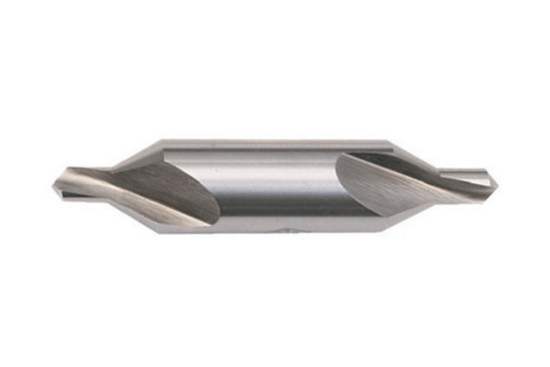
Ejector Drills
Ejector Drills are used after center drills to create bigger and deeper holes on the workpiece.
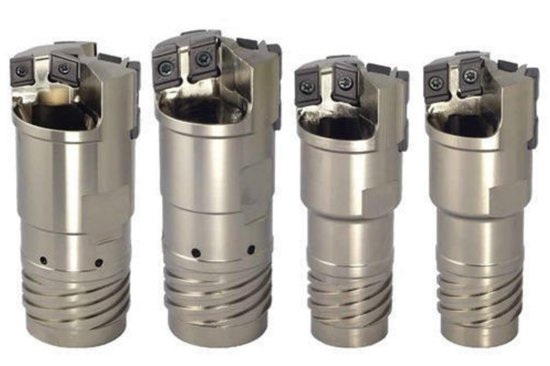
Twist Drills
Machinists use twist drills to make holes that do not require major specifications.
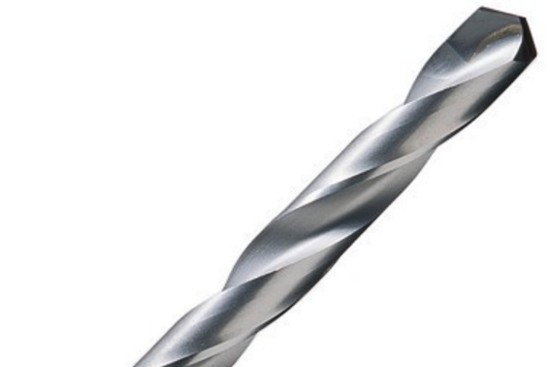
Sometimes, machinists classify drilling tools as a subsection of cutting tools.
Grinding Tools
Grinding tools work in conjunction with grinding wheels. They are used to smoothen the surface of a workpiece and usually have a high accuracy level. The only identified grinding tool is the abrasive grinding wheel.
Different Types of Materials Used in Making CNC Machine Tools
The raw material of CNC machine tools determines the machining procedure, such as the feed rate and cutting speed, you can use. A general rule of thumb is that the raw material of your CNC machine tools must be harder than the workpiece material. If not, the tool will be largely ineffective for the procedure. Listed below are some common examples of materials used in making machining tools:
Carbon Steel
Containing a mixture of silicon, carbon, and manganese, carbon steel is the cheapest tool used in making CNC machine tools. However, with its low price comes a major disadvantage. The material has low durability.
Hence carbon steel machine tools cannot function in heavy-duty operations. Due to its low melting point (200°C), it cannot withstand the high heat generated in heavy-duty operations; hence it starts to melt. Machinists use it to cut lightweight materials like foam or plastic.
High-Speed Steel
Containing more durable metals like tungsten, molybdenum, and chromium, high-speed steel is a more durable material for making CNC machine tools. With a melting point of 600°C, materials made out of high-speed steel are suitable for heavy-duty operations and can withstand high heat levels.
Cemented Carbides
Cemented carbides consist of carbides and metals like titanium. Due to its constituents, it can even withstand higher temperatures than high-speed steel. However, the material is not as durable as high-speed steel. This means their duration of use could be cut short by cracks or chips on the tool surface. Hence, their use is majorly limited to making tools used for finishing.
Cutting Ceramics
This is the hardest material on this list. Resistant to corrosion and heat, machining tools made out of this material can cut through the hardest of workpieces. However, they are similar to cemented carbides in their tool lifespan. Despite their hardness, manufacturers rarely use them to make CNC machine tools as they are susceptible to cracks and chips.
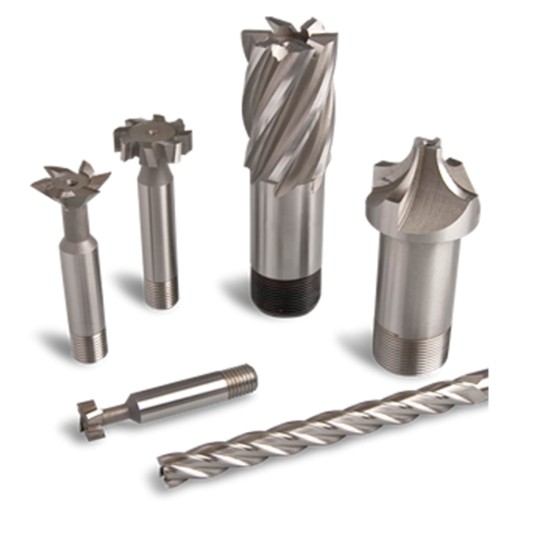
What Common Coatings are Used in CNC Machining Tools?
Another factor that contributes to the properties of CNC machine tools is the coating used. These coatings can improve the tool’s life and hardness and help them withstand higher temperatures. Examples of common tool coatings include:
Titanium Nitride
This is one of the earliest and most common coatings used to increase the hardness of cutting tools. Apart from hardness, it also improves other properties such as the thermal stability and the wear resistance of tools. It also has moderate resistance to oxidation.
However, manufacturers came up with variations of this coating with better properties. Hence, its use is not as widespread as before.
Chromium Nitride
Manufacturers made chromium nitride coatings to function where titanium nitride couldn’t. The coating increases the hardness of machine tools and makes them corrosion-resistant. It also increases their thermal strength and makes them suitable for tools for high heat applications.
Aluminum Titanium Nitride (AlTiN) / Super-Life Titanium Nitride
This coating should not be confused with the Titanium Aluminum Nitride coating (TiAlN). This two differ in their aluminum content. TiAlN contains 40% aluminum, while AlTiN contains about 65% of aluminum. This coating increases the resistance of CNC machine tools to heat.
Titanium Carbo Nitride
This is another variation of the titanium nitride coating, which contains carbon. Due to the relatively low operating temperature of this coating, it cannot function in high-temperature environments. It improves properties such as the hardness and surface lubrication of CNC cutting tools.
Factors to Consider When Selecting CNC Machine Tools
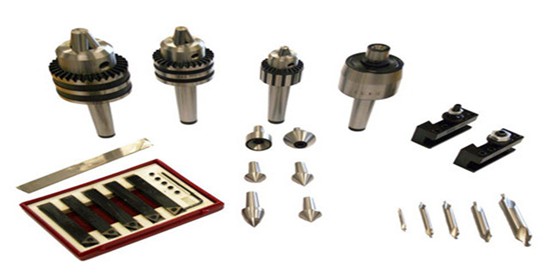
Making sure you have the right tool is vital to the success of any machining procedure. To ensure you have the right tool, you must consider the various properties required to complete the best surface roughness machined parts successfully. Listed below are the various factors to consider when choosing machining tools:
The Material the Workpiece is Made From
The material you intend to work on is vital to your tool choice. As mentioned earlier, the tool used in a machining procedure must be harder than the workpiece. After determining the toughness of the workpiece, you can easily determine the materials that can work for the machining procedure.
The Raw Material of the Tool
The properties of the tool are also vital to picking the right tool. For example, if you need a tool that has a long tool life and can withstand high heat, high-speed steel tools are the best choice. However, cutting ceramics is the best option if you want a tool that can cut extra-hard materials like cast iron.
Number of Flutes
The number of flutes on the tool is important as they determine the feed rate of the machine tool. The larger the number of flutes, the higher the velocity at which the cutter moves against the workpiece. However, too many flutes could also lead to the cut-off workpiece bits getting stuck between the flutes. Hence, getting the optimum number of flutes for a machining procedure is vital.
The Type of Machining Operation in Consideration
There are various CNC machining tools specified for various machining procedures. Hence, the type of machining procedure gives you a shortlist of tools you can work with. However, in some cases, the tools for a particular machining procedure can work for other applications.
The Tool Coating
The coating of the machine tool is also vital as it impacts the properties of the tool. For example, a titanium nitride coating increases the cost of producing a tool and its hardness. Hence, if you need a tool with a cheap price point, a titanium nitride tool is out of the question.
No Machining without CNC Machine Tools
CNC machine tools are indispensable in machining procedures. However, you need to get the right one to make sure the machining procedure proceeds unhinged. Instead of cracking your head on the right tool, you can outsource your machining operations to experts.
Why worry about choosing CNC machine tools when you could get a team of experts to do it for you? WayKen is your one-stop shop for everything CNC machining expert, we offer various types of CNC machining services, including milling, turning, drilling, EDM, etc. Be it a prototype or low-volume machined parts, you can be sure to get high-quality production parts.
In addition, You don’t have to worry about high prices when working with WayKen. We offer some of the best prices alongside industry-leading turnover times.
You can reach out to us to get a machining quote, and we’ll respond within the next 12 business hours. Click the button below to get straight through to us today!
FAQs
Is there any tool that can work for all machining procedures?
While some tools can work for more than one procedure, no single tool is functional in all types of procedures. It is advisable to use only tools specified for a machining procedure to achieve the best results.
What type of material is best for making CNC tools?
The best material for a CNC machine tool will depend on the machining procedure the tool will work with. However, high-speed steel gives the best of both worlds in terms of price and hardness.
Is coating necessary for CNC tools?
Coating helps to improve the properties of machining tools. Hence they are important to many tools. However, they are not necessary. You can use these tools without coating. The only issue with most tools without coating is that they might not last as long as coated tools.

